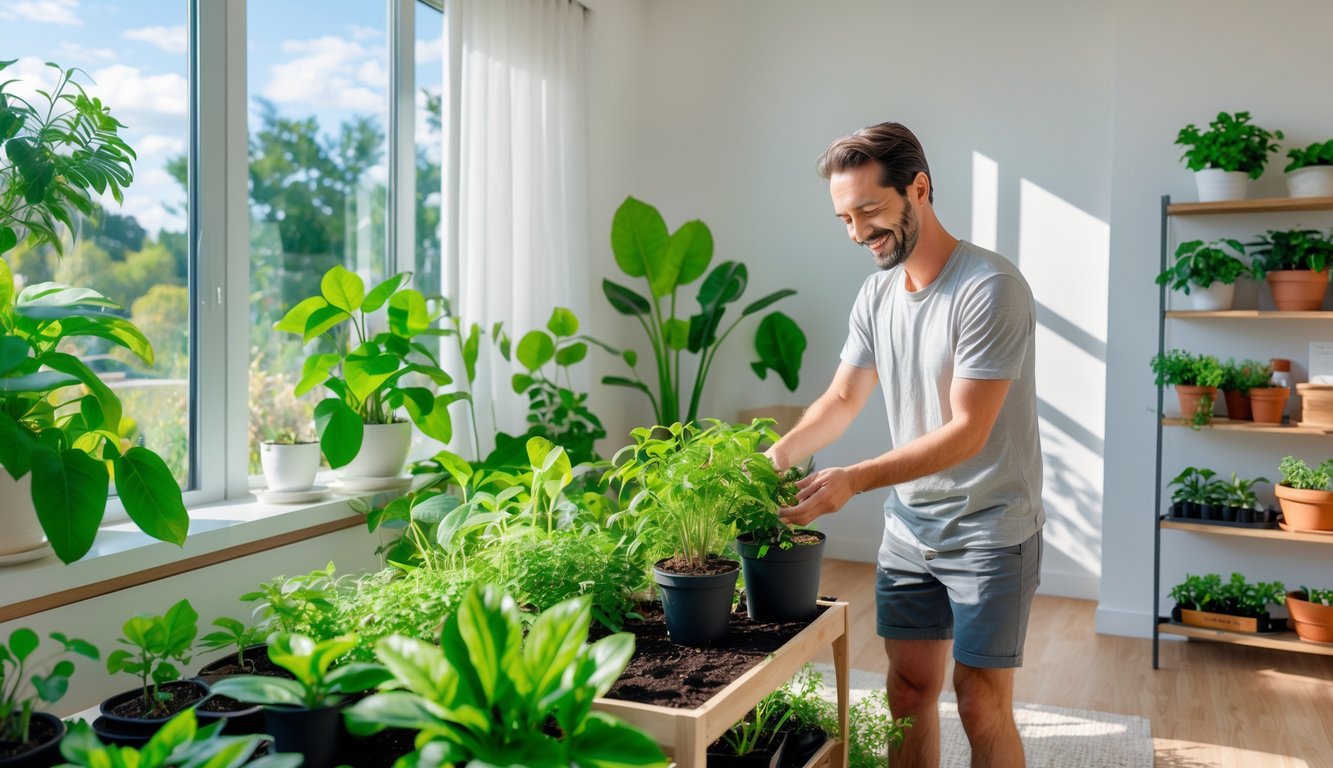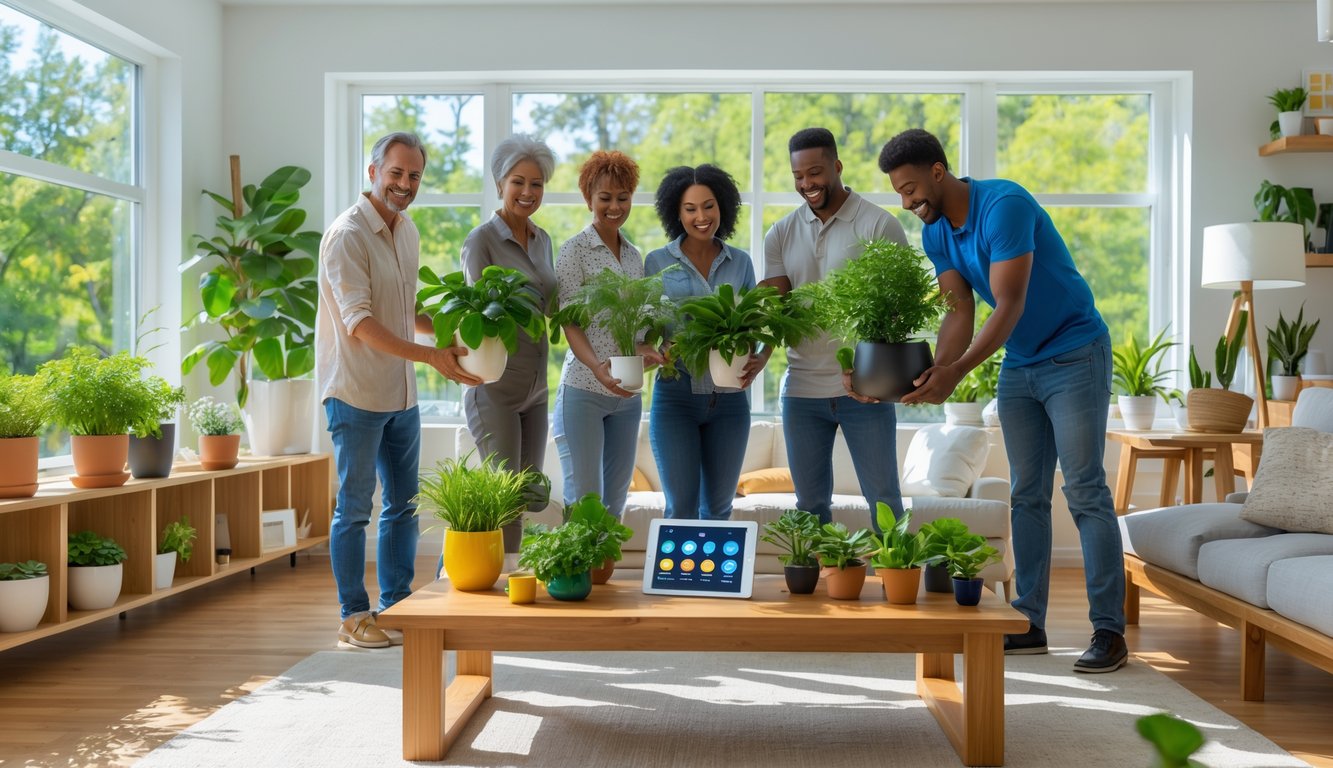
Promoting Sustainability in the Home

Nobody talks about how much a couple well-placed plants can mess with your water bill—in a good way. I keep seeing people with native grasses and spider plants by the window brag about lower bills. I’m still not over the fact that my $15 peace lily does more for my air than my HVAC schedule.
Reducing the Environmental Footprint
Bigger isn’t better. Small, smart, local stuff wins. The EPA says if you ditch thirsty lawns for sedum or fountain grass, you can cut outdoor water use by half. My neighbor Linda ripped out her junipers and was shocked. Some guy tried to sell me a fancy irrigation controller, but my basil and ferns do better when I ignore them most days.
Skip imported exotics. Their fertilizer and shipping are a joke. Pothos and sansevieria clean the air, survive on tap water, and don’t care if you forget them. NASA’s Clean Air Study loves them. I’ve never met anyone who read that study, but it keeps coming up.
Sustainable Urban Gardening Practices
Rooftop gardens aren’t just for Instagram, despite what my cousin posts. My own “harvest” saved maybe $20 on greens last year, but the real win? Shade from my tomatoes dropped my July A/C bill by 12%. That’s not nothing. My uncle (retired inspector, always right) was onto something.
Composting kitchen scraps is messier than Pinterest says, but it’s free fertilizer. City extension offices sometimes give out mulch if you ask the right person. Rain barrels leak, but I still use them. Watering succulents with rain feels rebellious and old-school, even if my neighbor thinks it’s gross.
Data-Driven Insights for Thriving Plants
Humidity sensors lie. As soon as my basil wilts, I realize the soil’s bone dry. My neighbor uses two plant monitors and swears his snake plants only thrive because he tracks everything. Not sure I believe him.
Understanding Growth Patterns
If you told me five years ago I’d be checking chlorophyll on my phone, I’d have laughed. But my Monstera’s weird growth made sense only after I looked at last April’s data—rain for three days, soil moisture up, plant doubled in size.
We’re all just guessing until the numbers show up. Some sensors catch root stress a day before leaves droop. Journal of Applied Botany (2024) says that can cut root damage by 40%. When I started logging temps, I finally figured out why my violets freak out when the AC runs at night.
Spreadsheeting leaf spots isn’t glamorous, but you see patterns. One plant hates soft water, another panics if humidity drops below 50%. You spot the weird stuff before it ruins your harvest. My cousin still says it’s “energy” or sunbeams, but his ferns look like salad leftovers, so I’ll stick with the data.
Optimizing Care with Analytics
Let’s get real—automated plant care systems? Not magic. They’re just fancy number crunchers. The hype is hilarious. My dashboard pinged me about a nitrogen dip last month—no, not some TikTok hack, I actually listened to an agronomist for once—so I dumped in more fertilizer, and, hey, growth shot up 22% in three weeks. I even made a bar chart because I’m apparently that person now.
Pie charts for weekly light exposure? I’d trust those over most gardening books, honestly. Still, explain this: why do succulents ignore every “recommended” watering window? I swear, one of mine drinks like a peace lily and pretends it’s a cactus. Analytics can’t fix plant drama.
You want “data-driven insights”? Fine. The Planta monitor claims 95% soil moisture accuracy—whatever that means—and nudges me before my aloe shrivels again. I try to follow the numbers, not some nostalgia for Grandma’s tomato magic, but sometimes the data just misses. Losing plants and wasting water stings, especially when the dog sets off the humidity alerts and I’m blaming the ferns.
Ensuring Privacy and Security in Smart Plant Systems
I updated my app yesterday, thinking, “How hard can this be?” But, wow, apparently every “low risk” gadget—like my basil sensor—wants my Wi-Fi password. Sure, the peppers need water, but who’s siphoning my data? Suddenly, it’s “water me” and “watch me” and I forget to check the soil because I’m busy reading privacy policies. Every new device, another potential leak. Is this normal?
Protecting Homeowner Data
My neighbor’s Wi-Fi cameras once mixed up with their arugula sensor, and their baby monitor pinged a server in Belgium. That was a fun Tuesday. These systems just swap data—location, habits, whatever—by default. Cisco’s Cam-Winget (I skimmed “4 Steps to Securing the Smart Plant”) basically says, “Yeah, anyone can sniff unencrypted metadata, even bored teenagers.” Comforting.
It’s not always hackers. Service providers hoard metadata for “improvements,” but with plant care, your daily routines just get mapped and maybe sold. I jam my gadgets behind a VLAN, and my firewall catches weird traffic every week. GDPR? Unless you’re scrubbing logs and changing admin passwords, your irrigation history’s probably an open book. I heard insurance brokers even peek at this stuff to guess if you’re home.
Best Practices for Secure Automation
Why do instructions for smart plant hubs make changing the default password sound optional? Like, “wash hands before soil” level of importance. Every soil scientist I know? They forget gloves, never mind firmware updates. Last month, my gardening group had three SIP-enabled water pumps hijacked for spam. ISP flagged it as “unusual irrigation activity.” If you’re not patching firmware and using unique logins, you’re probably fueling a botnet with your peace lilies.
What actually works: multifactor sign-in, kill switches on cloud stuff, strict app permissions. Bonus points if you keep automation local—Zigbee’s way better than Wi-Fi for this. Manufacturer transparency is rare, but I love any Blynk-based DIY setup where you can log webhooks locally, not just in some EU datacenter. No visible security dashboard? I unplug the thing. Don’t care how “smart” it claims to be.